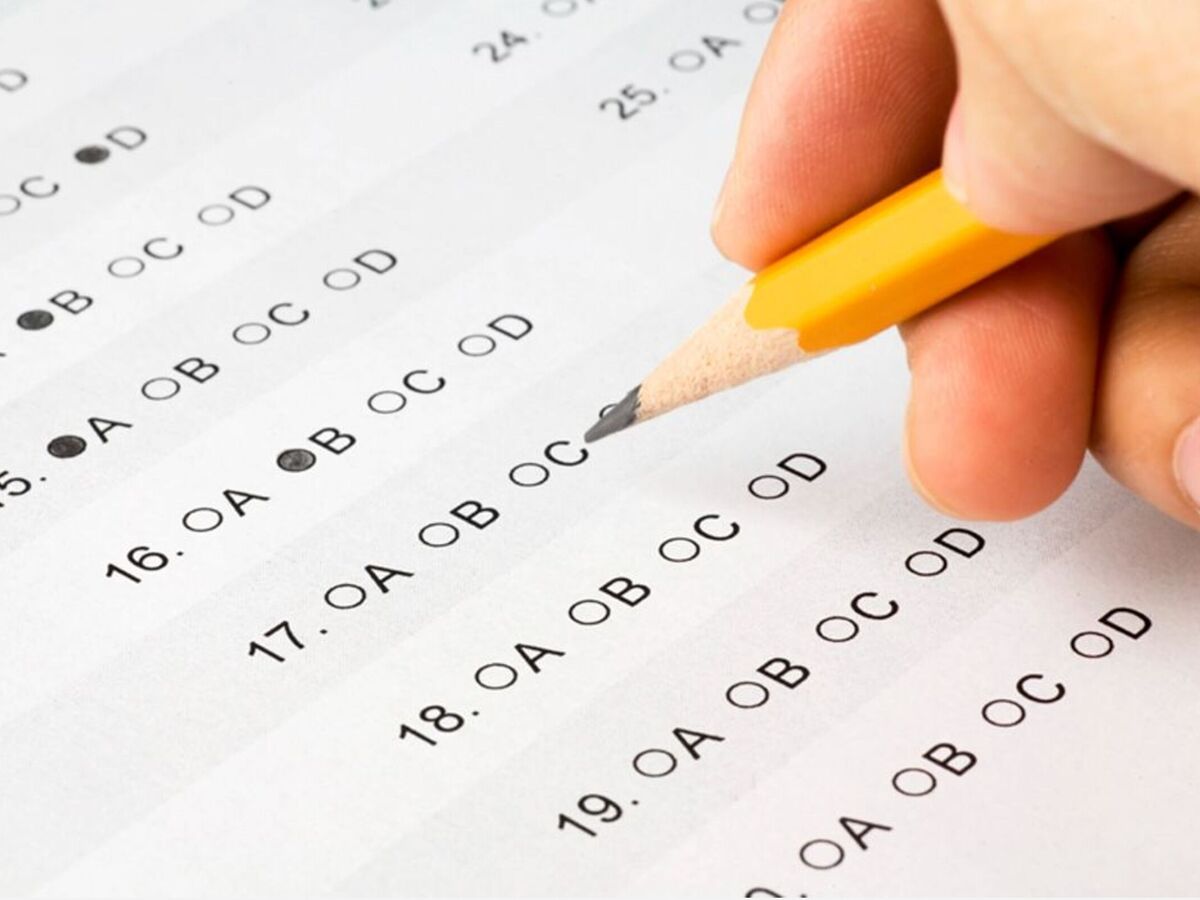Image

Image is "Exam" by Alberto G.
For a long time, test makers have known how the brain works, and they create questions accordingly. A savvy test taker knows the traps to avoid and strategies to deploy to do well on tests. The best strategies are rooted in simple brain science, namely you want to use as many heuristics or shortcuts as possible to allow yourself to solve the most problems correctly in the shortest amount of time. The test makers count on this and try to distract test takers with appealing, but incorrect shortcuts. This installment of the series, How Students Can Ace Tests, reviews some of my favorite test taking heuristics.
Our minds are amazing sense-making, pattern-seeking organs. As such, we even see patterns that do not exist, and we are susceptible to suggestion and optical illusions. To take advantage of these features of our brains without the negatives, a tried-and-true strategy is to ignore the test maker’s suggestions and find your own answer. For example, on a typical multiple-choice question, you have four or five answer choices. Typically, a single answer choice will answer the question best. Instead of being influenced by the test maker’s answers, try to answer the question on your own. In other words, “predict” the answer. Prediction reduces the likelihood that the test maker’s answers will fool you by suggesting compelling but misleading options.
Test makers know how powerful our minds are at using models to represent abstract things. Math is all about using numbers and abstractions as tools to solve concrete, real world problems. Unfortunately, test makers are smart and can be devious. One way to fool a person is to create a complicated, abstract problem. To make matters worse, test makers can intentionally use our mind’s model making capacity to lead us down the wrong path. Pay very close attention to when an object is not drawn to scale. Test makers can intentionally misrepresent a model and can really fool people. To combat this ploy, it is important to redraw figures to scale whenever possible. Drawing the answer is a truly important way to harness the amazing power of our brains.
To immunize themselves from the test’s deceptions, a savvy test taker predicts their own answer choice. To intelligently take advantage of the multiple choice format that supplies the answers, make your prediction, and then see what’s wrong with the choices supplied.
By definition, there is something awry with an answer choice that is not right. Ask what is wrong with the given answer by paying close attention to the question. Often the directions are asking for the best possible answer choice. In this type of scenario, all answers may be technically correct, but one of the options will simply be the best and most complete answer. One ploy used to trick the naïve test taker involves answer choices that are right but only under certain conditions. For example, cold generally causes things to contract. In most cases, this is true, but don’t tell that to water. When water gets cold enough, it turns to ice and it expands. So, like a picky suitor, find what is wrong with an answer choice.
Another important strategy involves paying attention to details. The following words often signal a not so great answer choice: always, never, all, and must. At the same time, the following words often signal a correct answer choice: generally, often, probably, seldom, tends to. Remember the test maker at times has to make fine distinctions between answer choices to distinguish the best answer choice. Test makers know that many unskilled test takers are hurrying through the test and are often so relieved to find a plausible answer that they do not take the time to carefully scrutinize key words that reveal what is not right with an answer
The next hint really improved my own results. Although it seems straightforward, you would be surprised by how many test takers struggle with this - answering the question being asked. Recalling novel anxiety and the importance of practice from Part 2 of this series, it helps to familiarize test takers with the 6 general types of reading comprehension questions.
Knowing the question type provides an important clue to the purpose of the reading passage. Remember, the test taker is not supposed to read the passage for pleasure or for general knowledge. While that might be the purpose behind reading a book or article, on a test, the reading passage is only there to test reading comprehension. Recognizing the type of question and only answering the question being asked is a truly important tip. The following types represent typical questions encountered in reading comprehension assessments.
Heuristics or shortcuts are important to performing well on standardized tests. But as with many good things in life, there are also drawbacks to shortcuts. More specifically, test makers deliberately try to tap into our brain’s amazing abilities to lead us astray. To counter this ploy, be sure to first predict the answer or create your own drawing, and then carefully examine the answer choices to see what is wrong with each one. Although it seems obvious, answering the question being asked leads to better results. Knowing the typical types of reading comprehension questions can provide purpose to reading a passage.
The next thrilling installment will explore additional strategies to capitalize on our brains’ strengths while mitigating its drawbacks.
Eric Wright is a longtime educator who has helped improve many of his students' test scores. If you found this article interesting or helpful, please consider supporting local news by subscribing to Westwood Minute's free daily email newsletter. Just click the blue "Sign Up" button below.